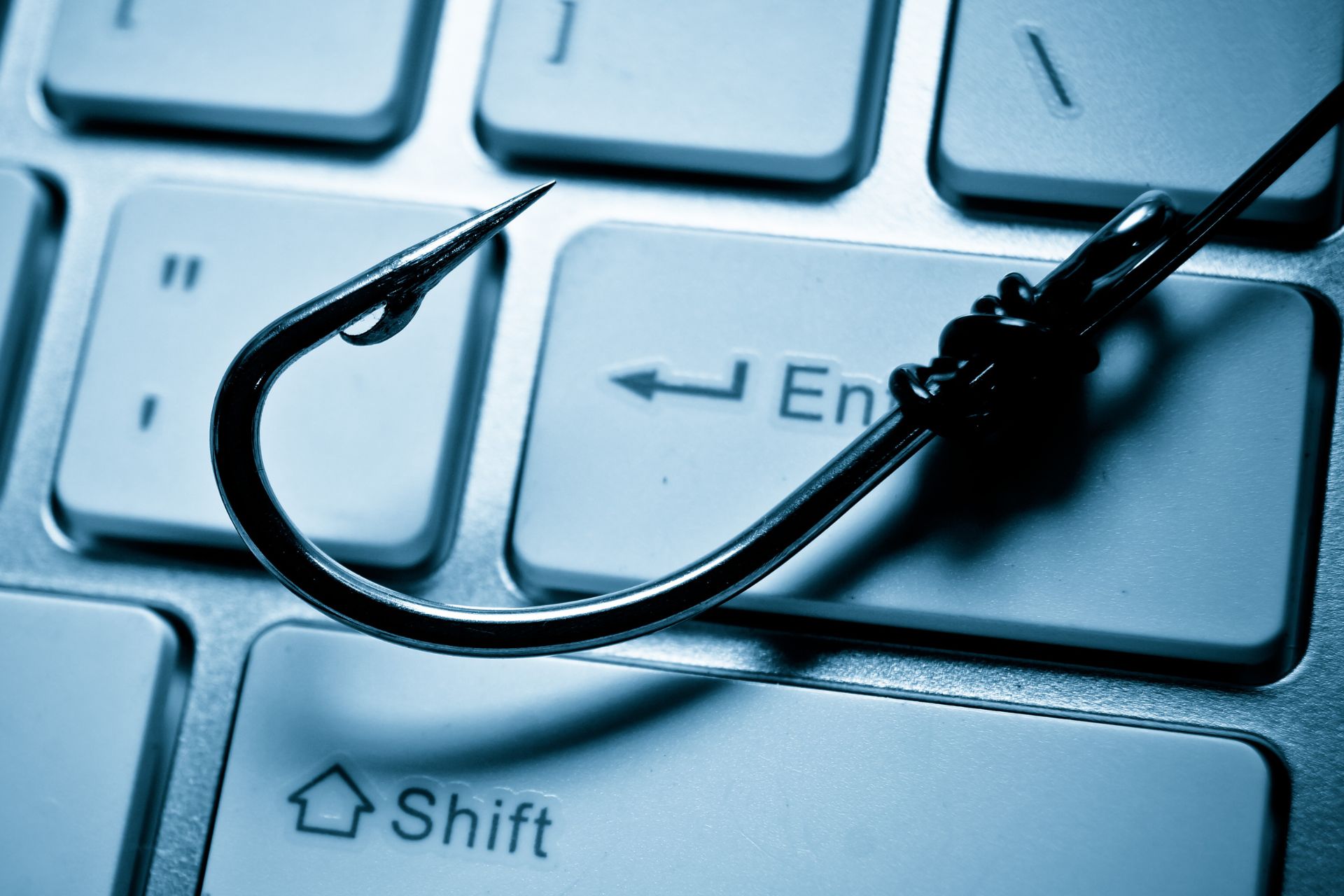In the vast array of cybersecurity threats, the whaling attack stands out for its targeted precision and potential damage. Unlike the more common phishing attack, which casts a wide net hoping to catch any unsuspecting victim, whaling is the tactical hunting of the “big fish” in an organization – the senior executives.
Cybercriminals aim to deceive these high-ranking individuals into taking actions that can severely harm an organization, such as granting unauthorized access or money transfer. This causes financial losses, data breaches, or reputational damage for companies and their partners.
This article explains everything you need to know about a whaling attack, what it is, how to recognize one, and why it is so appealing to cybercriminals. We also list ways to prevent whaling attacks and protect your company’s assets.

What Is a Whaling Attack?
A whaling attack is a type of phishing attack specifically targeting high-profile individuals within an organization, such as CEOs, CFOs, or other executives. These senior executives are sometimes referred to as "big fish", hence the term "whaling" as opposed to just "phishing".
The victims of a whaling attack are targeted by attackers who masquerade as legitimate and known entities. The senior executive usually receives an email that appears to come from a trusted source, such as a company contact, partner, vendor, or customer. The victim is then encouraged to disclose business-sensitive information either directly or by clicking a link that leads to a spoofed website.
The motivation behind targeting these individuals often stems from the high level of access or authority they possess, which can lead to more significant rewards for the attacker if the attack is successful.
The first step in preventing whaling attacks is to learn about the different forms and goals of a phishing attack. Read our article on how to identify a phishing attack and protect your company from serious harm.
Whaling Attack Examples
Whaling attacks exploit the authority and trust the impersonated individuals hold within an organization to to deceive their targets. Here are some examples of whaling attacks:
- Mattel Inc. In 2015, a financial executive at the toy company received an email that appeared to be from the CEO requesting that $3 million be paid to a vendor in China. The executive made the payment only to discover that they had been a victim of a whaling attack. In a lucky turn of events, the company eventually managed to recover the funds.
- Ubiquity Networks Inc. In 2015, cybercriminals impersonated a company executive and attacked the tech company's financial department. As a result, the company transferred $46.7 million to fake vendors. The company managed to recover a little over $8 million.
- Leoni AG. In 2016, the German cable manufacturer suffered a whaling attack. Attackers impersonated high-level executives and tricked employees into making money transfers. The company eventually lost over $43 million.
- Unnamed Energy Company. An undisclosed UK-based energy company suffered a whaling attack using AI deepfake audio. The CEO received a phone call that appeared to be from the parent company’s CEO in Germany, requesting an immediate wire transfer of funds. After the transfer was completed, the attackers phoned two more times. As a result, the CEO grew suspicious and alerted the authorities.
How Does a Whaling Attack Work?
Here is a step-by-step explanation of how a whaling attack works:
- Target selection. Attackers identify a high-profile individual within an organization. This could be a CEO, CFO, CTO, or any other executive position with authority or access to valuable information.
- Research. Attackers gather information about the target before the attack. This can include professional details (job responsibilities, direct reports, and ongoing projects) and personal details (hobbies, friends, and family). Criminals often use public sources like company websites, social media platforms, and news articles for this purpose.
- Crafting the attack. Using the principles of social engineering, attackers design a phishing email or message that appears legitimate and relevant to the target. The email may impersonate someone the executive knows, such as a colleague, a personal contact, or a trusted vendor. The message often conveys a sense of urgency or importance to prompt quick action without much scrutiny. Common requests include transferring funds, providing confidential data, clicking a link, or downloading an attachment.
- Action. If the executive falls for the scam, they might take the requested action. This can lead to financial losses, data breaches, malware infections, or other security incidents.
- Exploitation. Once the attacker obtains what they need, they use the information or access for financial gain, further attacks, espionage, or other malicious purposes.
- Covering tracks. Sophisticated attackers might take steps to hide their activities, making it harder to detect the data breach or scam. This includes erasing logs, installing additional malware to maintain access, or routing stolen funds through multiple accounts to cover the trail.
Social engineering is a powerful tactic cyber criminals use to exploit the weakest link in a system – human behavior. Read about famous examples of social engineering attacks to understand this dangerous strategy.
What Is the Goal of a Whaling Attack?

The goals of a whaling attack vary based on the attacker's motivations and the target's role or level of access within an organization.
Here are some common goals of whaling attacks:
- Financial gain. Enabling unauthorized fund transfers or redirecting legitimate payments through fraudulent invoicing.
- Data theft. Stealing sensitive company information (business strategies, intellectual property, etc.) or personal employee data for subsequent cyber attacks or blackmail.
- Malware installation. Infecting the executive's device or the company's network with ransomware, spyware, or other malicious software and establishing a foothold within the organization's network for future attacks.
- Credential harvesting. Gaining login details for high-level systems or databases and accessing email accounts for further spear phishing attacks on the organization or its contacts.
- Espionage. Gathering competitive intelligence to gain an understanding of internal company decisions, strategies, or upcoming projects.
- Reputation damage. Spreading of false information or confidential data to harm the company's image or blackmailing executives with personal or sensitive data.
- Disruption. Creating chaos or distractions within an organization as part of a broader attack on the company or its partners, clients, and vendors.
Consequences of a Whaling Attack
The consequences of a whaling attack can be severe, given the high level of access and trust associated with the targeted executives.
Here are some potential consequences:
- Financial losses. The losses range from unauthorized transfers of company funds to fines or penalties due to regulatory breaches or non-compliance.
- Data breaches. Exposure of sensitive corporate information, such as intellectual property, business strategies, or financial and personal data. This data leakage often leads to identity theft or fraud.
- Tarnished brand image. Loss of trust among clients, partners, and stakeholders, and negative media coverage can lead to a poor brand image.
- Operational disruption. Malware infections lead to downtime, data loss, and service disruption due to compromised systems.
- Legal repercussions. Lawsuits from affected clients, partners, or employees, and regulatory actions due to the exposure of personal or sensitive data.
- Increased costs. Expenses related to breach investigations and remediation, the cost of enhancing security infrastructure and protocols following the attack, and potential ransom payments if the attack involves ransomware.
- Loss of competitive advantage. Leakage of proprietary information or business strategies to competitors, which compromises business deals or partnerships.
- Decreased stock value. A breach can lead to a drop in stock prices, affecting shareholders and their stake in the company.
- Blackmail and extortion. Attackers often demand money in exchange for not releasing sensitive business or personal information.
- Loss of stakeholder confidence. Investors, partners, and customers may lose faith in the company's ability to protect its assets, leading to severed ties and lost business opportunities.
- Compromised personal safety. In extreme cases, the personal safety of the targeted executive or their family could be at risk, especially if personal details are exposed.
The ability to recover swiftly from adverse events, whether natural or man-made, is a measure of the longevity and ultimate success of a business. Creating a disaster recovery plan is one of the most important business continuity best practices.
Who Is a Victim of a Whaling Attack?
In a whaling attack, the primary victim is usually a high-ranking individual within an organization. However, a successful whaling attack ripples through the entire organization to inflict consequences that affect the shareholders, employees, customers, and partners.
High-ranking individuals targeted in whaling attacks include:
- CEOs (Chief Executive Officers). Often the primary target due to their overarching authority and access to various departments of the organization.
- CFOs (Chief Financial Officers). Targeted for their direct access to the organization's financial resources and decision-making capabilities regarding financial transactions.
- CTOs (Chief Technology Officers) or CIOs (Chief Information Officers). Selected due to their access to critical IT infrastructure and data.
- Board members. They have insights into strategic decisions and access to confidential company information.
- Other high-ranking executives and managers. Such as VPs, directors, or department heads, depending on the organization's structure and the attacker's specific goals.
CEO fraud is a common type of whaling attack. The higher the ranking of the executive – the higher the potential damage is to the company.
How to Prevent a Whaling Attack?
Preventing a whaling attack requires a combination of technological measures, employee training, and organizational policies. By incorporating these preventive measures and fostering a culture of security awareness, organizations can significantly reduce the risk of falling victim to a whaling attack.
Here are the steps organizations can take to prevent whaling attacks:
- Security awareness training. Regularly train employees and high-profile targets about the risks and methods of whaling attacks. Conduct periodic vulnerability assessments through simulations or mock attacks to test their preparedness.
- Email Security. Implement advanced filtering solutions that block spoofing emails or suspicious attachments. Flag emails from external sources to make it easier for recipients to identify potential threats before opening them.
- Multi-factor authentication (MFA). Require MFA for accessing company systems, especially for high-level executives. This adds an additional layer of security and ensures that unauthorized access is restricted even if login credentials are compromised.
- Domain verification. Implement Domain-based Message Authentication, Reporting, and Conformance (DMARC) to authenticate legitimate email senders and prevent domain spoofing.
- Other verification procedures. Establish a policy of asking for additional verification for requests involving money transfers, the sharing of sensitive information, or any atypical requests. Encourage face-to-face or phone call verifications for requests that may seem unusual or suspicious.
- Regular monitoring and audits. Monitor executive accounts and transactions for unusual activities. Conduct regular IT audits to ensure system integrity and identify potential vulnerabilities.
- Restricted information sharing. Limit the amount of personal and business information you share publicly. For instance, avoid giving out direct email addresses of top executives on public platforms and websites. Caution executives about sharing personal or professional details on social media.
- Endpoint security. Ensure that all devices used by executives are secured with the latest antivirus and anti-malware tools. Regularly update and patch all software and operating systems.
- Incident response plan. Have a well-defined procedure to follow in case of a suspected or successful whaling attack. This should include steps to assess, contain, and mitigate the situation and to notify affected parties.
- Secure communication channels. Encourage the use of encrypted communication channels for discussing sensitive business matters.
- Network security. Implement a robust network security infrastructure, including firewalls, intrution detection systems, and secure VPNs for remote access.
- Regular backups. Ensure that all critical data, including that of executives, is backed up regularly. This can be crucial, especially in cases where ransomware is deployed.
Cybersecurity planning includes the development of a robust data backup strategy. Our step-by-step guide to creating a backup strategy will help you ensure that all your business-critical data is restorable, regardless of what caused the initial data compromise.
How to Block a Whaling Attack?

If you suspect a whaling attack is underway or identify one when it happens, swift and decisive actions are crucial to block and mitigate potential damage. Blocking a whaling attack when it happens requires quick action, robust security infrastructure, and a well-coordinated response from various departments.
Here is what to do to block a whaling attack:
- Notify IT and security teams. Engage your IT and cybersecurity teams immediately. They will assess the nature of the threat and deploy necessary countermeasures.
- Isolate affected systems. If the targeted individual clicks a link or downloads an attachment, immediately disconnect the device from the network to prevent the potential spread of malware. Employ zero-trust security on all systems to minimize the chances of the attack happening again.
- Change credentials. If there's a possibility that login credentials were compromised, urge the executive (or the affected individual) to change their passwords immediately. If multi-factor authentication (MFA) isn't in place, consider implementing it as an added security measure.
- Notify executives. Immediately notify other executives and high-profile individuals in the organization about the attack so they are on high alert and less likely to fall for a similar attempt.
- Monitor all transactions. If the attack has a financial motive, notify your financial department to flag and monitor any large or unusual transactions. Employ an Intrusion Detection System (IDS) to monitor all activity.
- Check for data exfiltration. Monitor network traffic for signs of data being transferred out of the organization.
- Engage third-party experts. If the potential impact of the attack is high, consider bringing in external cybersecurity experts or firms that specialize in incident response.
- Preserve evidence. If you suspect a breach or malicious activity, ensure logs and other evidence are preserved. This can aid in investigations and may be required for regulatory or legal reasons.
- Revert to backups if necessary. If data integrity is in question or if ransomware is involved, you might need to restore data from immutable backups. Check that these backups are clean and not affected by the malicious activity first.
- Communicate with stakeholders. Depending on the severity of the attack, you might need to notify stakeholders, partners, or customers, especially if their data is at risk.
- Review and update policies. Once the immediate threat is addressed, review the incident to identify gaps in policies or training. Use this as an opportunity to refine your security protocols.
How to Report a Whaling Attack?
Reporting a whaling attack is essential not only to alert authorities but also to help prevent future incidents for both your organization and others.
Here is how to report a whaling attack.
- Create an internal report. Immediately inform your IT and cybersecurity teams so they can start the investigation, take necessary precautions, and implement mitigation strategies. Alert the top management about the incident, especially if there's a potential for significant financial or reputational damage.
- Notify local law enforcement. Depending on your country or jurisdiction, report the attack to the appropriate local law enforcement agency. In many regions, there are dedicated cybercrime units that handle such incidents.
- Report to national cybersecurity authorities. Many countries have national cybersecurity agencies or organizations responsible for overseeing and responding to cyber threats. In the U.S., report to the FBI's Internet Crime Complaint Center (IC3) or the local FBI field office. For businesses, the Cybersecurity and Infrastructure Security Agency (CISA) is also a resource.
- Involve regulatory bodies. If your organization operates within a regulated industry (like banking, healthcare, or utilities), you might be required to report incidents to regulatory bodies.
- Use incident sharing platforms or ISACs. Information Sharing and Analysis Centers (ISACs) exist in many sectors (like financial services or healthcare) to share threat information among member organizations.
- Report to data protection authorities. If personal data is compromised, you might need to report the breach to data protection authorities under regulations like the GDPR (for the EU), CCPA (for California, U.S.), or similar data protection laws in your jurisdiction.
- Notify insurance providers. If your organization has cyber insurance, you may need to report the incident to your insurance provider as part of the claims process.
- Communicate with affected stakeholders. Notify affected customers, partners, or employees if their data or interests are at risk.
- Inform the general public. Depending on the severity and public visibility of the attack, consider releasing a public statement or press release to address the situation, reassure stakeholders, and highlight the steps being taken.
Cybersecurity statistics in healthcare paint a grim picture: the average cost of a data breach in healthcare by far surpasses similar breaches in other industries. In order to prevent costly data breaches, healthcare providers need to comply with HIPAA regulations. phoenixNAP provides a watertight HIPAA-ready secure cloud hosting, specifically designed to meet the stringent requirements of the healthcare industry.
Navigating the Deep Waters of Whaling Attacks
Whaling attacks specifically target high-ranking officials within organizations to exploit the unique access and trust bestowed upon these individuals. The consequences of a successful whaling attack are multifaceted, ranging from significant financial loss to severe reputational damage.
Organizations must prioritize training, robust security measures, and prompt reporting to ensure that these cyber harpooners don't find success in their deceitful endeavors.



